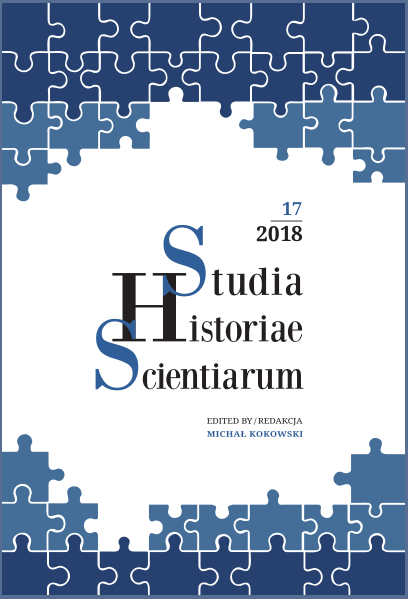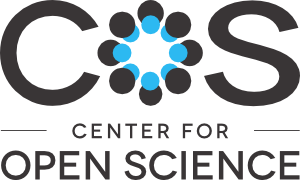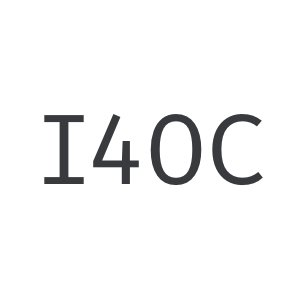A rebuttal of recent arguments for Maragha influence on Copernicus
DOI:
https://doi.org/10.4467/2543702XSHS.18.017.9337Keywords:
Copernicus, Maragha school, Tusi couple, harmonic motionAbstract
I reply to recent arguments by Peter Barker & Tofigh Heidarzadeh, Arun Bala, and F. Jamil Ragep claiming that certain aspects Copernicus’s astronomical models where influenced by late Islamic authors connected with the Maragha school. In particular, I argue that: the deleted passage in De revolutionibus that allegedly references unspecified previous authors on the Tusi couple actually refers to a simple harmonic motion, and not the Tusi couple; the arguments based on lettering and other conventions used in Copernicus’s figure for the Tusi couple have no evidentiary merit whatever; alleged indications that Nicole Oresme was aware of the Tusi couple are much more naturally explained on other grounds; plausibility considerations regarding the status of Arabic astronomy and norms regarding novelty claims weight against the influence thesis, not for it.
References
Bala, Arun 2016: The Scientific Revolution and the Transmission Problem. Confluence: Online Journal of World Philosophies 4(2016), pp. 62–80. Available online: https://scholarworks.iu.edu/iupjournals/index.php/confluence/article/download/558/63/.
Barker, Peter; Heidarzadeh, Tofigh 2016: Copernicus, the Tusi Couple and East-West Exchange in the Fifteenth Century. [In:] Miguel A. Granada, Patrick J.
Boner & Dario Tessicini (eds.), Unifying Heaven and Earth: Essays in the History of Early Modern Cosmology. Publicacions i Edicions de la Universitat de Barcelona, 2016, pp. 19–57. Available online: https://books.google.pl/books?id=u-H2bDQAAQBAJ.
Blåsjö, Viktor 2014: A Critique of the Arguments for Maragha Influence on Copernicus. Journal for the History of Astronomy 45(2), pp. 183–195. DOI: 10.1177/002182861404500203.
Blåsjö, Viktor 2015: Some notes on my Copernicus paper. Intellectual Mathematics. October 9, 2015. Available online: http://intellectualmathematics.com/blog/some-notes-on-my-copernicus-paper/.
Blåsjö, Viktor 2016: Reply to Arun Bala on Copernicus-Maragha issue. Intellectual Mathematics. October 20, 2016. Available online: http://intellectualmathematics.com/blog/reply-to-arun-bala-on-copernicus-maragha-issue/.
Blåsjö, Viktor 2017: On the role of Arabic sources in early modern astronomy. Intellectual Mathematics. July 13, 2017. Available online: http://intellectualmathematics.com/blog/on-the-role-of-arabic-sources-in-early-modern-astronomy/.
Di Bono, Mario 1995: Copernicus, Amico, Fracastoro and Tusi’s Device: Observations on the Use and Transmission of a Model. Journal for the History of Astronomy 26, pp. 133–154. Available online: http://articles.adsabs.harvard.edu/cgi-bin/nph-iarticle_query?1995JHA....26..133D&data_type=PDF_HIGH&whole_paper=YES&type=PRINTER&filetype=.pdf.
Copernicus, Nicolaus 1995: On the Revolutions of the Heavenly Spheres. Translated by Charles Glenn Wallis. Prometheus Books, Great Minds Series.
Copernic, Nicolas 2015: Des révolutions des orbes célestes. 3 volumes. Critical edition, translation, and introduction by Michel-Pierre Lerner, Alain-Philippe Segonds, and Jean-Pierre Verdet. Paris: Les Belles Lettres.
Curtze, Maximilian 1895: Mathematisch-historische Miscellen. Bibliotheca Mathematica 9(2), pp. 33–42.
Dobrzycki, Jerzy; Rosen, Edward 1978: Nicholas Copernicus on the Revolutions. Volume 2, Macmillan, 1978.
Droppers, Garrett 1966: The Questiones de spera of Nicole Oresme. Ph.D. Dissertation. University of Wisconsin.
Feingold, Mordechai 1996: Decline and Fall: Arabic Science in Seventeenth-Century England. [In:] F. Jamil Ragep, Sally P. Ragep, Steven John Livesey (eds.), Tradition, Transmission, Transformation: Proceedings of Two Conferences on Pre-Modern Science Held at the University of Oklahoma. Leiden: Brill, 1996, pp. 441–469. Available online: https://books.google.nl/books?id=Kl1COWj9ubAC&printsec=frontcover#v=onepage&q&f=false.
Goddu, André 2010: Copernicus and the Aristotelian Tradition: Education, Reading, and Philosophy in Copernicus’s Path to Heliocentrism. Leiden (Netherlands), Boston (USA): Brill.
Hartner, Willy 1971: Trepidation and Planetary Theories: Common Features in Late Islamic and Early Renaissance Astronomy. Convegno internazionale, 9-15 Aprile 1969: Tema: Oriente et occidentenel medioevo: filosofia e scienze. Accademia Nazionale dei lincei, Fondazione Alessandro Volta, 1971, pp. 609–632.
Kokowski, Michał 2004: Copernicus’s Originality: Towards Integration of Contemporary Copernican Studies, Warsaw – Cracow: Instytut Historii Nauki PAN.
Kren, Claudia 1971: The Rolling Device of Nasir al-Din al-Tusi in the De spera of Nicole Oresme? Isis 62(4), pp. 490–498.
Nobis, Heribert; Pastori, Anna Maria 2002: Receptio Copernicana: Texte zur Aufnahme der Copernicanischen Theorie. Berlin, München, Boston: De Gruyter Oldenburg.
Nobis, Heribert; Sticker, Bernhard 1984: De revolutionibus libri sex: Neue synoptisch-kritische Ausgabe des lateinischen Textes der Editio prima und des Autographs. Walter de Gruyter.
Ragep, F. Jamil 2017: From Tun to Torun: The Twists and Turns of the Tusi-Couple [In:] Rivka Feldhat & F. Jamil Ragep (eds.), Before Copernicus: The Cultures and Contexts of Scientific Learning in the Fifteenth Century. Montreal, Quebec, Canada: McGill-Queens’s University Press, pp. 161–197.
Rosen, Edward 1939: Three Copernican Treatises: The “Commentariolus” of Copernicus, the “Letter against Werner”, the “Narratio prima” of Rheticus. Translated with Introduction and Notes by Edward Rosen. [Records of Civilization, Sources and Studies, Austin P. Evans, Editor.] New York: Columbia University Press.
Saliba, George 1994: A Sixteenth-Century Arabic Critique of Ptolemaic Astronomy: The Work of Shams al-Din al-Khafri, Journal for the History of Astronomy 25, pp. 15–38. Available online: http://articles.adsabs.harvard.edu/cgi-bin/nph-iarticle_query?1994JHA....25...15S&data_type=PDF_HIGH&whole_paper=YES&type=PRINTER&filetype=.pdf.
Saliba, George 2007: Islamic science and the making of the European Renaissance, MIT Press.
Swerdlow, Noel M. 1973: The derivation and first draft of Copernicus’s planetary theory: A translation of the Commentariolus with commentary, Proceedings of the American Philosophical Society 117, pp. 423–512.
Swerdlow, N. M. 2017: Copernicus’s Derivation of the Heliocentric Theory from Regiomontanus’s Eccentric Models of the Second Inequality of the Superior and Inferior Planets, Journal for the History of Astronomy 48(1), pp. 33–61.
Toomer, G. J. 1988: Ptolemy’s Almagest. Princeton, New Jersey, USA: Princeton University Press. Translated and annotated by G.J. Toomer. With a foreword by Owen Gingerich.
Veselovsky, I. N. 1973: Copernicus and Nasir al-Din al-Tusi. Journal for the History of Astronomy 4, pp. 128–130. Available online: http://articles.adsabs.harvard.edu/cgi-bin/nph-iarticle_query?1973JHA.....4..128V&data_type=PDF_HIGH&whole_paper=YES&type=PRINTER&filetype=.pdf.
Downloads
Published
How to Cite
Issue
Section
License
Copyright (c) 2018 Viktor Blåsjö

This work is licensed under a Creative Commons Attribution-NonCommercial-NoDerivatives 4.0 International License.






























